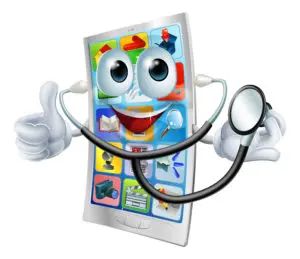The rise of call centres in the health sector

It used to be that health services were provided just in the four walls of a doctor’s rooms. But the Internet, consumer demands and an unfriendly pandemic have changed all that. Call centres and online service delivery have grown exponentially, providing easier, faster access to health advice and information, 24×7.
Since the turn of the millennium, the Australian Government has invested heavily in the establishment of – mainly free – telehealth services for the public. Doctors and nurses work around the clock to provide telephone-based advice, diagnosis, prescriptions, care and treatment for a wide range of conditions. Complementing the care provided by the regular GP, particularly when the GP is unavailable, telehealth supports the community and deflects unnecessary attendance at stretched emergency departments. Internationally, these services are also common, with equivalent services in Canada, USA, NZ, China, Southeast Asia and Europe.
Telemedicine is a direct response to a ballooning health budget, an overburdened healthcare system, and impacts on productivity and the economy caused by a high number of sick days (Australia has 88 million lost work days due to employee sickness annually). Across government, not for profit and commercial providers, telehealth is helping minimise costs and deliver better patient care.
There are countless examples of contact centres being used across the gamut of health service delivery, including:
- Health information and advice provided by nurses through healthdirect, Nurse on Call and 13HEALTH
- Parenting Lines: Pregnancy, Birth and Baby and Parent Helplines
- GP services: Telstra ReadyCare, after hours GP Helpline
- Health coaching programs: Get Healthy and Quitline
- Pharmaceutical companies: product recall hotlines
- Ambulance control centres
- Poisons information
- Pandemic hotlines (such as the Coronavirus Health Information Line 1800 020 080)
- Wellness programs provided by health insurance companies
- Mental health support lines: Beyond Blue and Lifeline
- Community support lines: such as Family Drug Support
- Aged care support services: Aged Care Gateway
- Community based intake: Oral health and child development checks
- Disease-specific helplines provided by not-for-profits: Leukemia Foundation and Diabetes Australia
In summary, health call centre services deliver real benefits including:
Enhanced access and service for customers
When you are sick, getting to a GP is not always convenient or possible – you may be too sick to leave the house, juggling kids, too far away from the GP, or the sickness may occur out of business hours when the GP is not open. The convenience of phone-based health advice appeals to time-poor workers, new mothers, after-hours callers, travel insurance callers and those who simply cannot access a regular GP due to location or disability, for example.
Many people call health services because they are unsure what to do, because they need to find information or perhaps discuss a condition that is of an embarrassing nature. Telehealth services have a common goal which is positive change in the caller by the end of the call. The caller should be calmer, more confident and empowered with knowledge about what steps to take next.
Improved utilisation of key clinician resources
With an ageing and growing population, the cost of healthcare to the community is compounded further by a growing shortage of clinical experts. Also consider people in prisons, remote locations and mining companies, those who don’t have a regular GP, and the critical role of call centres becomes apparent. Call centres don’t replace but support medical practitioners by allowing focus on delivering care without distraction of ringing phones. A great example of this is happening as Australian emergency departments direct their calls in the first instance to the various nurse-based telephone triage call centres such as healthdirect Australia and Nurse on Call.
Access to the experts and latest tools
The surge in health call centres has given rise to a new breed of specialised call centre outsourcing providers. These outsourcers are enabling even small players in the industry to deliver a faster, more accessible and available service to their clients. Key is the technology which the outsourcers bring to the table and embed in their service offerings, including:
- electronic decision support software and algorithms, providing safe and effective health triage, information and advice to callers
- workforce management software to ensure the right number of clinicians are available at the right time to service demand
- state-of-the-art multi-channel contact centre platforms, which support not only phone-based service, but also video calls and photo integrations to allow patients the ability to share photos of bites or rashes, for example.
Cost-effective
Whilst most health care necessitates face to face delivery, there are opportunities to leverage call centre cost efficiencies for simple and transactional health events. General advice and information, initial triaging, managing appointments and simple diagnosis all benefit from the cost-effective call centre interface.
Lower risk and better compliance
Telehealth services operate like any other professional contact centre but with additional considerations around risk management, data privacy, staffing costs, funding models, strict regulations and standards. Due to its critical and sensitive nature, the healthcare industry has its fair share of litigation and bad press. Professional health call centre service providers know this full well, and so operate with quality protocols and tools to make sure these issues are managed.
The centralised nature of call centres, whether insourced our outsourced, economise the tools and resources required to ensure compliance with legal and industry standards.
Find a call centre provider specialising in health
Last updated on: May 8, 2023
